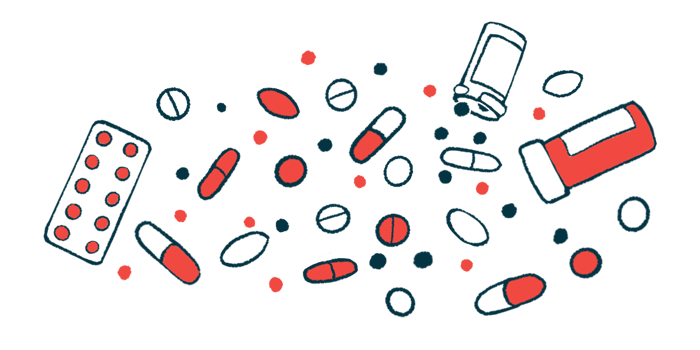Rituximab can offer benefits when used to treat acquired angiodema
The cancer therapy may help control swelling attacks and boost remission rates
Written by |

Treatment with rituximab — approved for certain cancers to reduce the levels of antibody-producing immune cells — is effective to control swelling attacks in people with acquired angioedema, particularly in cases where the disease is linked to an underlying lymphoma, or a blood cancer that develops in the lymphatic system.
That’s according to data from a retrospective analysis, which also finds that treatment with rituximab is associated with a lower risk of relapse and a higher remission rate.
“These findings prompt us to recommend treating lymphomas associated with frequent AE [angioedema] attacks,” researchers wrote.
The study, “Efficacy and safety of rituximab-based treatments in angioedema with acquired C1 inhibitor deficiency,” was published in The Journal of Allergy and Clinical Immunology: In Practice.
Acquired angioedema occurs in adults with no family history of the disease
Acquired angioedema usually occurs in people older than 40 who do not have a family history of the disease. The condition may be driven by the excessive consumption or inactivation of C1 esterase inhibitor (C1-INH). In the absence of C1-INH, the levels of a pro-inflammatory molecule called bradykinin may get too high, triggering a swelling attack.
Acquired angioedema is frequently associated with an underlying immune system disorder or cancer, such as lymphoma. It may also be driven by the body’s immune system erroneously producing antibodies targeting C1-INH.
Rituximab (sold under the brand name Rituxan, among others) was found to be effective in preventing angioedema attacks in patients with an underlying lymphoma and has been proposed as an option for treating acquired angioedema associated with this type of cancer. The therapy works by lowering the levels of antibody-producing immune B-cells.
In the study, a team led physicians in France evaluated the long-term efficacy and tolerance of rituximab in patients with acquired angioedema.
To that end, they analyzed data from a multicenter retrospective study conducted in France involving acquired angioedema patients who had been treated with rituximab from 2004 to 2016. The analysis also included follow-up data from these patients gathered up to December 2019, as well as data on additional patients who had received rituximab from April 2015 to June 2019.
In total, 55 patients (65% women) who were a median age of 61 years when they had their first attack, were included in the analysis. In 23 of them (42%), anti-C1-INH antibodies were detected.
39 patients in study had lymphoma
Most patients (39) had lymphoma and nine had a monoclonal gammopathy, a blood disorder in which abnormal proteins made in the bone marrow are found in the blood.
Facial attacks were the most frequent, occurring in 81% of the patients. These were followed by attacks affecting the abdomen (60%), extremities (50%), larynx (40%), tongue (36%), and external genital organs (16%).
In total, 41 patients received treatment for acute attacks, consisting of Firazyr (icatibant) and C1-INH concentrates, all associated with favorable outcomes.
Long-term preventive treatments were used by 38 patients, but failed to control attacks. These included tranexamic acid, Danocrine (danazol), and C1-INH concentrates.
Patients who received rituximab stopped long-term preventive treatment within three months, if the therapy was efficient.
Rituximab alone was administered to 30 patients (54%) and 25 patients with lymphoma (45%) received a combination of rituximab and chemotherapy. Three patients were given rituximab as maintenance therapy for 1.5 or two years.
Lymphoma remission was achieved by 20 patients, with the disease returning in five of them who required salvage therapy, mainly consisting of immunotherapy.
A total of 16 patients were given a single cycle of rituximab, while 38 required at least a second-line therapy.
After six months on rituximab, most patients (82%) had clinically responded to treatment, meaning they experienced no attacks or had a minimum of 50% reduction in the attack rate during that period.
34 patients in remission after treatment
A total of 51 patients had available follow-up data, of whom 34 were deemed to be in clinical remission. This was defined as having no attacks or experiencing a reduction in attack frequency of more than 50% compared with the period prior to receiving any preventive treatment. Seventeen patients were still with active disease after a median follow-up of 3.9 years.
Biological remission, defined by C1-INH activity greater than 50% without long-term preventive therapy, was achieved by 13 patients.
The presence of anti-C1-INH antibodies was significantly associated with a lower likelihood of angioedema remission. Conversely, acquired angioedema associated with lymphoma and treatment with rituximab plus chemotherapy were linked to a significantly lower risk of relapse.
Treatment with rituximab was in general well tolerated, with three patients experiencing adverse outcomes. None of them had to discontinue rituximab or required intensive care treatment.
Overall, these findings support rituximab as an “an efficient and well-tolerated therapeutic option in AE [acquired angioedema], especially in lymphoid malignancies and in the absence of detectable anti C1-INH Ab [antibodies],” the researchers wrote.
Of note, several of the researchers have financial links to pharmaceutical companies, including those that market rituximab and its biosimilars.








